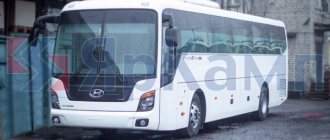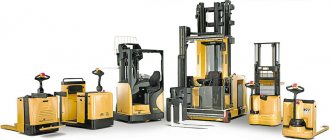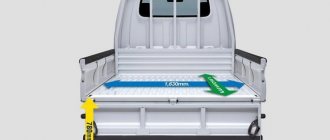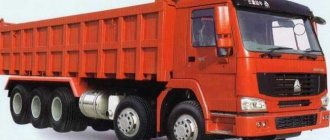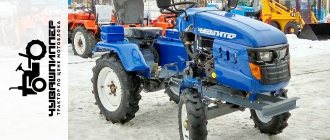Daniil Minaev.
This bus, despite all its external similarities, is not a Scania Higer A80, not an updated OmniExpress, and certainly not a “Cruise”. The listed models have in common only the basic chassis, but the constructive approach to creating the final product is completely different. Scania Touring is the subject of today’s conversation, a snow-white airliner aimed at the discerning European, not only a passenger, but also a driver and a mechanic. Russian customers, despite economic difficulties, have recently given preference to the Touring model, although they previously actively purchased the related, but simpler Scania Higer A80.
Snow-white liner
Scania Touring is not so young; the premiere of this bus took place in 2009 at the Busworld exhibition. The body and chassis are designed in Sweden, and production, organized in cooperation with Higer, is located in Shanghai. Touring cars come in different lengths and can have two or three axles. On request, the bus will be additionally equipped with a kitchen, toilet and driver’s berth, but Russian customers today prefer the simplest configurations without these amenities. But even in the basic equipment of the bus there is a lot of useful and interesting equipment, which I will touch on when describing systems and assemblies. For now, I’ll just note some details: automatically opening luggage hatches with pneumatic drive, the luggage compartment itself is ventilated, with a volume of up to 10 m3, depending on the equipment of the bus. The passenger compartment has 19-inch monitors, a video surveillance system, seats with a center offset function and adjustable footrests. There is no need to mention the air conditioning system, convector heating with an additional autonomous liquid heater and individual ceiling lamps - this goes without saying.
The driver's workplace, the parking brake valve is deeply and securely hidden on the left side, apparently, they were afraid of inadequate passengers...
Scania A80
This is a spacious tourist bus designed for intercity transportation. The model is designed for 51 passengers. The guide has a separate seat with armrests, a 3-point seat belt and a microphone.
Glazing . The side and rear windows are tinted double-glazed windows, so that bright sunlight is muffled, and passengers can sleep peacefully at any time of the day. If the sun still bothers you, you can close it with a curtain. Electrically heated windshield.
Interior . For each passenger there is an individual unit with airflow, lighting and a “Stop” button. The cabin has a digital clock and an outside temperature indicator. What else is interesting:
- radio and MP3 player - there are speakers both in the driver’s area and in the passenger compartment, so everyone can enjoy pleasant music;
- CD, DVD - thanks to 17” TFT monitors, you can watch films, cartoons or videos about the places you are going to visit on the road;
- closed-circuit television surveillance system - this option is provided for the safety of passengers and the peaceful resolution of conflict situations;
- Rear view camera - provides good visibility behind the car, making parking and reversing easier for the driver.
Seats . The model is equipped with Vega seats. The seats have the function of moving to the center and adjusting the backrest, so you can sit or lie in the most comfortable position. And for the convenience of passengers, armrests and footrests are provided. There are seat belts: for seats located in open areas, they are 3-point, and for the rest - 2-point.
Heating . In winter, you won’t freeze in this bus: there is an autonomous Webasto Thermo 300 heater, which quickly heats the interior and maintains a comfortable temperature. Thanks to convector heating, all the heat is evenly distributed throughout the bus. The air conditioner is working.
Luggage compartment . For large luggage, there is a separate compartment under the floor with a capacity of 7,500 liters. There are also special shelves for hand luggage in the cabin, just like on an airplane. Small personal items can be stored in the net located behind each seat.
Invisible differences
To most accurately explain the philosophy of Scania Touring, I will give a humorous, not entirely parallel, but quite clear example from our recent history. In the best times for the Soviet automobile industry, many of our brands and models were exported. It was the export versions of our cars that were the pipe dream of a simple Soviet buyer, but with a certain amount of “blat” they could sometimes fall into the hands of a wealthy citizen of a totalitarian empire. The fact is that the export version meant not only significantly better assembly and painting quality, a beautiful color, but also such pleasant little things as an improved interior with a radio, imported lighting equipment and a whole range of high-quality foreign components that are in very short supply. So it is here. The A80 brother bus is built to a greater extent on components localized or simply produced in the Middle Kingdom. In addition to the main units, Touring has completely Swedish electrical wiring with its own special “intelligent” multiplex system, Kiel Avance passenger seats of German-American origin, and the noble origin of all finishing materials.
Thanks to the system of hatches and openable flaps, access to the engine compartment is very convenient
...and if, by opening the locks, we lift the wheel arch linings, then we have excellent access to the front suspension and a whole set of components
The total volume of the luggage compartment is 10 m3
The mirror pillars do not protrude beyond the width of the bus and are equipped with additional spherical mirror elements in the middle of the bracket for better control of blind spots and curbs
Panoramic view and smooth ride
Another feature of Scania Touring is common to many European buses - remote pillars with rear-view mirrors. In Touring, they do not protrude beyond the width of the bus and are equipped with additional spherical mirror elements in the middle of the bracket for better control of blind spots and curbs. The driver has no problems with visibility: a huge panoramic windshield with invisible, but very useful heating threads and thin pillars on the sides. To help the driver, there is a small monitor on the right hand, which broadcasts images from several cameras, thanks to which you can always see overtaking vehicles, minimize blind spots and protect yourself when reversing. In the dark, xenon headlights will help you cope with the road; in daylight, LED running lights will help you recognize the bus from afar. On the right side of the “torpedo” there is a refrigerator for drinks. The chassis confidently endures road adversities, demonstrating a normal smooth ride, lazily swaying with long overhangs. Now is the time to look into the engine compartment.
DC 13 engine (400 hp, 2100 Nm) with separate cylinder heads
Features of the bus version of the engine: a “multi-layer” crankshaft pulley with a separate outlet for a giant air conditioning compressor mounted on an elastic support. For stable operation of the belt drive, an additional stretcher with a threaded coupling is used
The transmission perspective clearly indicates the excellent aerodynamics of the bus
The transmission perspective clearly indicates the excellent aerodynamics of the bus
Engine compartment
The 13-liter, 400-horsepower Scania DC 13 engine of the fifth environmental class is practically inaudible inside: from the driver’s seat, all information about the operation of the power unit can be analyzed only by instruments, no noise, no vibrations.
It’s just that 2100 Nm of torque already from one thousand revolutions per minute does not require much effort, especially without passengers. Similar engines are installed on other Scania vehicles, but the bus version, in addition to adjusting the external speed characteristics, also involves some mechanical differences, mainly in the drive of auxiliary units. Therefore, there are two powerful 150 A generators, a “multi-layer” crankshaft pulley with a separate output to a giant air conditioning compressor mounted on an elastic support. For stable operation of the belt drive, an additional stretcher with a threaded coupling is used. They didn’t forget about the service console in the engine compartment, and about the additional terminals of the pneumatic system, grouped on a separate panel on the right. This engine is paired with the familiar, latest-generation Opticruise GR875 8-speed automatic transmission, without a clutch pedal. Technical characteristics of the Scania Touring K400 IB4x2NB bus
| Total weight, kg | 19 500 |
| Axle load distribution, kg | 7500/12 000 |
| Passenger capacity, persons | 51 |
| Luggage compartment capacity, m3 | 10,0 |
| Luggage compartment load capacity, kg | 770 |
Engine:
| Scania DC 13 (Euro 5) Diesel, I-6 12 800 400 at 1900 min-1 2100 at 1000–1300 min-1 |
Transmission:
| GR875 Opticruise Automated 8/1 |
| Suspension | Pneumatic |
| Brake system | Pneumatic, disc mechanisms on all axles, hydraulic retarder, EBS, traction control system |
| Tire size | 295/80 R22.5 |
| Wheel formula | 4x2 |
| Fuel tank capacity, l | 465 |
K380IB 4×2 Higer A80 touring
Tourist bus Scania (Scania) Higer A80 K380IB 4×2 - number of seats: 47+1+1 / up to 165 people
- Characteristics
- Cabin
- Chassis/Brakes
- Engine/Gearbox
- Systems and equipment
Specification | |
| Chassis type - K - series | |
| Suspension type: pneumatic, dependent | |
| Opticruise - automated gear shift system | |
| Retarder - highly effective auxiliary braking system | |
| Changing the suspension height position | |
| Convector interior heating | |
| Toilet, Kitchenette | |
| Individual airflow for guide and driver seats | |
| Seating capacity 47+1+1. Total passenger capacity up to 165 people | |
| Guide seat with 3-point safety belt | |
| Wheel formula - 4×2 | |
| Destination: tourist bus |
Optional equipment | |
| Towing device - at the front of the bus | |
| Spare wheel - at the front of the bus | |
| SCANIA mud flaps - yes | |
| Wheel stops - 2 pcs. | |
| Fire extinguishers - 2 pcs. (4 kg) | |
| Warning triangles - 2 pcs. | |
| First aid kit - 1 pc. | |
| Tool box - 1 pc. |
Cabin | |
| Total passenger capacity up to 165 people | |
| Seating 47+1+1 | |
| Seats model Vega 440 (47 seats with adjustable backrests up to 40°), paired double-row seat layout + rear row of 5 seats (installed on a ramp), all passenger seats are equipped with 2-point seats (3-point seats for seats located on open | |
| Floor covering is high-quality plywood 15 mm thick, complete heat and sound insulation from special materials (from the middle to the end of the cabin), fire-resistant PVC floor covering | |
| Wall covering The wall covering from the floor to the lower window opening is made of high-quality, easy-to-clean material | |
| Front and middle doors with pneumatic drive and anti-pinch devices and control on the instrument panel, internal and external emergency door opening buttons, door mechanisms are covered with protective decorated covers | |
| Emergency exits in accordance with UNECE Regulation No. 36 - 2 ceiling hatches with 4-position fixation, 4 side windows with hammers for breaking glass | |
| The toilet stall is located at the middle door | |
| Driver's seat model GRAMMAR, pneumatically sprung driver's seat with heating, headrest and 3-point seat belt, individual lighting, document compartment (located under the driver's seat) | |
| Guide seat with 3-point safety belt | |
| Rear view mirrors with electrical heating and adjustment on the instrument panel | |
| Electric sunblinds on the windshield (for driver and guide) + pleated curtains on all windows (for passengers) | |
| Speakerphone with driver's microphone | |
| Air conditioning system - climate control system (with functions of air conditioning and interior heating) of the KOVECTA model with digital control. Power - 32,000 kcal/h | |
| The overall body structure is a welded frame (high-strength welded profiles), internal cavities and external surfaces are treated with a wax-based anti-corrosion compound | |
| External roof panels (galvanized steel sheets); luggage hatches (3 mm aluminum sheets on a frame made of aluminum profiles); front roof, air conditioning cover, front and rear hoods (reinforced plastic); doors (aluminum with pneumatic drive | |
| Glazing: laminated tinted windshield (meeting UNECE 43 requirements), double side and rear windows (tempered and tinted glass), sliding driver's window, all windows are glued into the body frame | |
| Thermal insulation: complete heat and sound insulation of the body | |
| Individual airflow for guide and driver seats | |
| Convector interior heating system (double-circuit) | |
| Automatic air regeneration system and windshield defogger | |
| Audio-video equipment: radio, CD player (with a powerful amplifier and 16 speakers), DVD player built into the driver’s instrument panel with image output on 17” LCD monitors (Multi standard system) installed in the front and middle | |
| Electrical and electro-pneumatic horns, all wires are marked in English according to European standards | |
| Rear view camera with sound signal | |
| Multimode wipers | |
| The bus interior is illuminated with fluorescent lamps | |
| Individual lighting for passengers | |
| Halogen lighting for driver and guide | |
| LED lighting of the passage in the cabin | |
| Volume of luggage compartments, cubic meters m. - 7.5 | |
| the luggage compartment is located in the base of the bus, hatches (pneumatically driven) are controlled from the instrument panel, service hatches (including wheel arch hatches) are opened manually | |
| The frame is coated with an anti-corrosion compound | |
| The body is painted with DUPONT paint in the color specified by the customer | |
| The underbody, including the chassis frame, is coated with an anti-corrosion compound | |
| The luggage compartment interior is painted grey. |
Chassis | |
| 4x2 | |
| Length, mm - 12,000 | |
| Width, mm — 2,550 | |
| Height, mm - 3,800 | |
| Gross weight, kg - 19,000 | |
| Number and configuration of doors - two doors 1+1+0 | |
| Suspension type - fully pneumatic with electronic control | |
| Front axle 2 air springs in front | |
| Rear axle - 4 rear air springs | |
| Stabilizers on all axes | |
| Tires front/rear 295/80 R22.5 | |
| Wheels 8.25”x22.5”, stamped steel wheels |
Brake system | |
| Pneumatic braking system | |
| Disc brakes | |
| Electronic Brake System (EBS) | |
| Anti-lock braking system (ABS) | |
| PBS (Traction control system) | |
| Completely independent brake circuits on the front and drive axles, parking and compression brakes |
Engine | |
| DC12 13 Euro 4 | |
| 6-cylinder, 4 valves per cylinder, vertical in-line, water-cooled, direct injection (HPI) diesel engine with turbocharging and intercooling, EMS engine management system, Scania EGR | |
| Working volume, cubic meters see 11 700 | |
| Max. power 279 kW (380 hp) at 1800 rpm | |
| Max. torque 1900 Nm at 1100-1350 rpm | |
| Noise level 77 dB(A) at bus speed 80 km/h | |
| White smoke limiter | |
| NOx emission regulator | |
| Air purifier | |
| Cruise control | |
| Speed limiter |
Transmission | |
| GR875R | |
| 8-speed manual transmission with Opticruise shift control | |
| Scania retarder with manual and automatic control |
Electrical equipment | |
| Batteries - 225 A/h | |
| Generator – 2×150 A | |
| Single Pole Battery Switch | |
| Headlights xenon low beam and halogen high beam, lower and upper side lights | |
| Tail lights, brake lights, high and low marker lights, reverse lights, fog lights, license plate lights, turn signals, hazard warning lights, side marker lights, rear and side reflectors |
Fuel system | |
| Total capacity, l. — 465 (with filler neck on the right side) |

